Acoustic sensors enable efficient and non-invasive monitoring of a wide range of species, including many that are difficult to monitor in other ways. Although they were initially limited in application scope largely due to cost and hardware constraints, the development of low-cost, open-source models like the Audiomoth in recent years has increased access immensely and opened up new avenues of research. For example, some teams are using them to identify illicit human activities through the detection of associated sounds, like gunshots, vehicles, or chainsaws (e.g. OpenEars).
With this relatively novel dimension of wildlife monitoring rapidly advancing in both marine and terrestrial systems, it is crucial that we identify and share information about the utility and constraints of these sensors to inform efforts. A recent study identified advancements in hardware and machine learning applications, as well as early development of acoustic biodiversity indicators, as factors facilitating progress in the field. In terms of limitations, the authors highlight insufficient reference sound libraries, a lack of open-source audio processing tools, and a need for standardization of survey and analysis protocols. They also stress the importance of collaboration in moving forward, which is precisely what this group will aim to facilitate.
If you're new to acoustic monitoring and want to get up to speed on the basics, check out these beginner's resources and conversations from across the WILDLABS platform:
Three Resources for Beginners:
- Listening to Nature: The Emerging Field of Bioacoustics, Adam Welz
- Ecoacoustics and Biodiversity Monitoring, RSEC Journal
- Monitoring Ecosystems through Sound: The Present and Future of Passive Acoustics, Ella Browning and Rory Gibb
Three Forum Threads for Beginners:
- AudioMoth user guide | Tessa Rhinehart
- Audiomoth and Natterjack Monitoring (UK) | Stuart Newson
- Help with analysing bat recordings from Audiomoth | Carlos Abrahams
Three Tutorials for Beginners:
- "How do I perform automated recordings of bird assemblages?" | Carlos Abrahams, Tech Tutors
- "How do I scale up acoustic surveys with Audiomoths and automated processing?" | Tessa Rhinehart, Tech Tutors
- Acoustic Monitoring | David Watson, Ruby Lee, Andy Hill, and Dimitri Ponirakis, Virtual Meetups
Want to know more about acoustic monitoring and learn from experts in the WILDLABS community? Jump into the discussion in our Acoustic Monitoring group!
Header image: Carly Batist
April 2024
June 2024
July 2024
event
November 2023
event
event
| Description | Activity | Replies | Groups | Updated |
|---|---|---|---|---|
| Thanks Carly! I will keep anyone interested in this project posted on this platform. Cheers |
|
Acoustics, AI for Conservation | 19 hours 10 minutes ago | |
| 'Most importantly, we have to make it play a MIDI version of the DoctorWho theme song when you arm the device. That has to be the #1 feature if you ask me!' Seconded! |
+9
|
Acoustics, Biologging, Emerging Tech, Open Source Solutions, Sensors | 1 day 19 hours ago | |
| Hi Matthew,Thanks for your advice, this is really helpful!I'm planning to use it in a seagrass meadow survey for a series of ~20 drops/sites to around 30 m, recording for around... |
|
Acoustics, AI for Conservation, Data management and processing tools, Emerging Tech, Sustainable Fishing Challenges | 2 days 22 hours ago | |
| Awesome project!! |
|
Acoustics | 6 days 13 hours ago | |
| Thank you Carly! We have over 60 bats recorded in Zimbabwe |
|
Citizen Science, Acoustics, Conservation Tech Training and Education, Human-Wildlife Conflict | 1 week 2 days ago | |
| That is an interesting concept, and it would be great if something out there worked. In the meantime, I will try not to drive at dusk 🦘At one point, I knew the "sonic" animal... |
|
Acoustics, Citizen Science, Community Base, Human-Wildlife Conflict | 1 week 3 days ago | |
| This is so cool @Mauricio_Akmentins - congrats and look forward to seeing your project evolve! |
|
Acoustics, Biologging, Climate Change, Conservation Tech Training and Education, Data management and processing tools, Emerging Tech, Open Source Solutions, Protected Area Management Tools, Sensors, Software and Mobile Apps | 1 week 3 days ago | |
| Congrats @MattyD797 and team!!! We do a lot of work in the underwater bioacoustic realm and your tool certainly seems like it would be a great instrumental addition to the... |
|
Acoustics, Build Your Own Data Logger Community, Marine Conservation, Protected Area Management Tools, Sustainable Fishing Challenges | 1 week 3 days ago | |
| We've deployed passive acoustic monitors in various urban environments without any issues of theft, even in locations where camera traps and other technology has been historically... |
+5
|
Acoustics | 1 week 5 days ago | |
| We could always use more contributors in open source projects. In most open source companies Red Hat, Anaconda, Red Hat and Mozilla, people often ended up getting hired largely... |
|
Acoustics, AI for Conservation, Conservation Tech Training and Education, Early Career, Marine Conservation | 3 weeks 3 days ago | |
| Hello everyone, I'm interested in gathering insights on how the behavior of different species impacts the development and efficacy of... |
|
Biologging, Acoustics, Camera Traps, eDNA & Genomics, Emerging Tech, Marine Conservation | 3 weeks 5 days ago | |
| Thank you Carly, I will definitely take a look. |
|
Acoustics, Biologging, Climate Change, Conservation Tech Training and Education, Data management and processing tools, Remote Sensing & GIS, Software and Mobile Apps | 4 weeks ago |
WOPAM Day (World Oceans Passive Acoustic Monitoring Day)
12 July 2023 4:04pm
LABMaker
6 June 2023 3:31pm
17 June 2023 10:36am
Dear Tom, the AudioMoths are being sold via LabMakers (but I do not know if they construct them for them). Have you been in touch with the AudioMoth team? I am sure they will be able to provide you useful feedback regarding what you are trying to do, and LabMakers.
I have only used them to buy things from them.
Regards, Christos
3 July 2023 4:00pm
Hi Tom,
Seeed Studio also offers manufacturing services. Check out more info on the website here :)
RFCx/Arbimon is Hiring a Data Scientist!
28 June 2023 9:37pm
Bat Identification Tools Comparison
16 May 2023 3:32pm
19 May 2023 12:38pm
The BTO Acoustic Pipeline is free to use up to 100 GB / year (about 50 nights of triggered bat recording). I am not un-biased to comment on performance because I built the classifiers that are used by the Pipeline, but I would strongly recommend that you take a dataset (with everything - not just pulling out the best bat recordings) that you have taken time to manually check, put it through each option that you are considering, and critically compare the performance.
In particular, the largest differences in performance between a good and more poorly performance classifier will be for some of the more cryptic species, so particularly focus on e.g. Myotis species, Plecotus species - if you are in an area where Brown and Grey long-eared bat are present. See how well the approach is able to identify multiple species if present in a wav file - is the classifier just identifying the species with the strongest calls, how well does it identify bat social calls / e.g. is it mis-identifying Pipistrellus social calls as Nyctalus species , how well does it identify weak bat calls in noisy recordings (e.g. does it miss Barbastelle calls in recordings with bush-crickets), does it mis-identify small mammals calls as bats e.g. Brown rat calls as Nyctalus species.
8 June 2023 1:38pm
Hi Stuart, Thanks for your response, and nice to e-meet someone behind the BTO acoustic pipeline! I have been testing out BTO quite a lot recently, and have started comparing results to Kaleidoscope this month, and have been manually checking classification results against raw audio. Will keep you updated with any findings if of interest.
Is there a minimum frequency recording that needs to be taken when uploading the BTO acoustic pipeline? I'm also interested in small mammals, and suspect that 96 KHz should be fine, rather than 192/384 when recording for bats.
22 June 2023 6:57pm
Another option for you could be Arbimon - it's free and does not require any coding/programming knowledge!
The Wildlife Society Conference
19 June 2023 5:59am
Catch up with The Variety Hour: June 2023
16 June 2023 11:43am
Wildlife Monitoring Engineer
8 June 2023 4:54pm
ISO Speakers for Emerging Technologies class.
31 May 2023 4:29pm
31 May 2023 10:21pm
Definitely interested! I'm in the ecoacoustics/acoustic monitoring space, working at Rainforest Connection and Arbimon.
2 June 2023 2:08pm
Carly, that would be great! Thanks! I work with soundscapes and love the work of Rainforest Connection! I'll send you an email (@CUNY) to coordinate!
Frontier Labs BAR-LT Localization Firmware
19 May 2023 11:12pm
2 June 2023 1:46pm
Hi @tessa_rhinehart
Apologies, only just saw this message. Did you end up getting the firmware. I know the Frontier Lab guys and can possibly reach out to them if you are still having trouble. Let me know.
Cheers,
Rob
Funding Opportunity for attending bird-focused events and trainings
2 June 2023 12:54am
Looking for AI volunteer positions
24 May 2023 5:41am
24 May 2023 3:45pm
Hi Donya! You might check out the Conservation Tech Directory to see what projects/organizations/tools best align with your interests and skills.
New Paper: Identification of fish sounds
5 May 2023 12:40am
Xavier Mouy recently shared this new bioacoustics paper on Twitter. This research focuses on identifying fish sounds in relation to specific species through the use of three underwater portable audio-video platforms. The proposed array designs successfully identified fish sounds, and this paper covers instructions for others working in marine bioacoustics who would like to apply these ideas to their own work.
Marine Mammals Research Association (DMAD) and ACCOBAMS Joint Training Course
4 May 2023 1:00pm
Soundscape analysis using eco‑acoustic indices for the birdsbiodiversity assessment in urban parks (case study: IsfahanCity, Iran)
2 May 2023 11:52pm
[Recordings Now Available!) EarthRanger User Conference
27 April 2023 5:52am
Software for marine acoustic monitoring?
25 April 2023 11:53pm
Congo Basin activity?
30 March 2023 9:14pm
25 April 2023 5:08pm
greetings!
i sent you a PM regarding this, feel free to contact me however is most convenient for you -
regards,
chris
HydroMoth GroupGets Campaign is Open
17 April 2023 8:44pm
How do I get started with Bird Audio processing and classification?
17 April 2023 9:11am
World Oceans Passive Acoustic Monitoring Day
14 April 2023 4:36am
Project Manager, Rainforest Connection (RFCx)
12 April 2023 1:09pm
The 59th Annual Meeting of Illinois Chapter of The Wildlife Society
12 April 2023 5:24am
Accessible acoustic analysis tech for blind scientist - ideas?
31 March 2023 10:52pm
6 April 2023 10:49pm
Hey Kate I don't have any explicit ideas at the moment but will think on it - such a cool concept! I wonder if there's some form of tactile spectrogram that you could develop, or a way that you could have them try to draw a representation (so assign some shape) of what they are hearing as a means of classification a call and then clustering those shapes? There's a way of creating an image using foam and paper I believe so they could have a tactile record of those shapes. Guess it depends what you want to the quantitative results to be. Super cool that you are looking for greater accessibility in acoustics!!!
7 April 2023 1:40am
Hi Kate,
We've developed a screen-reader workflow for a classification problem on our "Ocean Voices" Zooniverse project, which simply asks folks to label sounds based on what they hear and omits the spectrogram altogether. There are lots of screen-reader users who are active in the Zooniverse Talk forums, so they may have valuable input for you as well.
Once a person has labeled data, I wonder if they could run automated detectors over the data in Pamguard, calculate features (using something like the R package PAMpal), and then use the BrailleR package to explore the statistics in R. This article has a pretty interesting summary about statistical software for visually impaired folks - might not be news to your student, but I thought it was pretty cool.
I'm very curious what our friends who are visually impaired might notice in the acoustic data. Best of luck to you and your student!
Cheers,
Anne
7 April 2023 5:11pm
Hi Kate- ARISTA Lab (Advanced Research in Inclusion & STEAM Accessibility) is actively working on this through their eclispse soundscape project. I recommend reaching out to MaryKay to get the latest on their project.
Megan
Who's going to ESA in Portland this year?
31 March 2023 9:27am
4 April 2023 9:58am
That sounds great. I think you should encourage people to bring a bit of tech with them, can be a good conversation starter/ice-breaker
4 April 2023 4:04pm
Good idea! I've got a ransom assortment of different acoustic recorders I can bring along
5 April 2023 11:58pm
Indeed, I'll be there too! I like to meet new conservation friends with morning runs, so I will likely organize a couple of runs, maybe one right near the conference, and one somewhere in a nearby park where we can look for wildlife. The latter would probably be at an obscenely early hour, so we can drive somewhere, ideally see elk (there are elk within 25 minutes of Portland!), and still get back in time for the morning sessions.
Updates about Arbimon for Ecoacoustics - free, cloud based analytical tool
31 March 2023 11:09am
31 March 2023 3:43pm
Yes please reach out with any questions on acoustic monitoring, Arbimon, RFCx, etc.!
The WILDLABS Variety Hour: March 2023 - YouTube
30 March 2023 4:04pm
If you missed our Variety Hour show yesterday, do not fear! It's already live on youtube for your viewing pleasure. Enjoy!






























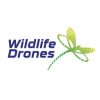
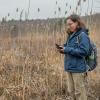


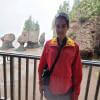

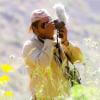




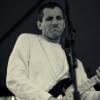

8 June 2023 1:59am
GroupGets?